All Images
Research News
From Fingerprints to Fiberprints
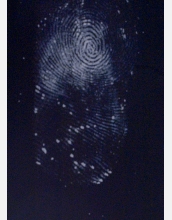
This thumbprint appeared after researchers sprayed it with a super glue, a process that forensic scientists use at crime scenes. The print is visible because chemicals in the residue from the finger reacted with the glue to form tiny, 3-dimensional structures.
Credit: Greg Greico, Penn State
Download the high-resolution JPG version of the image. (1.4 MB)
Use your mouse to right-click (Mac users may need to Ctrl-click) the link above and choose the option that will save the file or target to your computer.
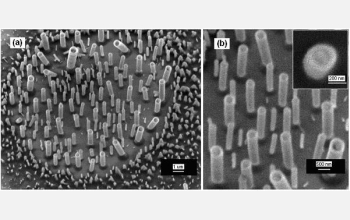
Polymer fibers grow on a fingerprint at 30 degrees Celsius and a relative humidity of more than 95 percent. Image (a) is a low-magnification view, and image (b) shows a close-up view of the same (the inset shows the top view of fiber).
Credit: Reproduced by permission of The Royal Society of Chemistry; Penn State
Download the high-resolution JPG version of the image. (44 KB)
Use your mouse to right-click (Mac users may need to Ctrl-click) the link above and choose the option that will save the file or target to your computer.

From left to right, the Pennsylvania State University team that studied the fingerprint-cyanoacrylate relationship: Henry C. Foley, professor of chemical engineering and director of the project; Pratik J. Mankidy, doctoral candidate in chemical engineering; and Ramakrishnan Rajagopalan, research associate.
Credit: Greg Greico, Penn State
Download the high-resolution JPG version of the image. (1.2 MB)
Use your mouse to right-click (Mac users may need to Ctrl-click) the link above and choose the option that will save the file or target to your computer.

Henry C. Foley, professor of chemical engineering at Pennsylvania State University, directs the cyanoacrylate-fiber study.
Credit: Greg Greico, Penn State
Download the high-resolution JPG version of the image. (1 MB)
Use your mouse to right-click (Mac users may need to Ctrl-click) the link above and choose the option that will save the file or target to your computer.
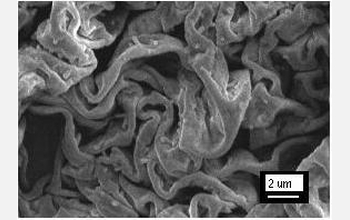
Researchers use sodium hydroxide to initiate the chemical reaction with the cyanoacrylate to create "tortellini-like" polymer films.
Credit: Reproduced by permission of The Royal Society of Chemistry; Penn State
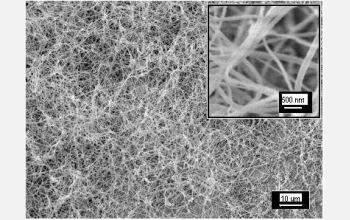
Researchers grew these polymer nanofibers using a synthetic starting mixture of linoleic acid and salt water. The inset showing the same area at a higher magnification.
Credit: Reproduced by permission of The Royal Society of Chemistry; Penn State
Download the high-resolution JPG version of the image. (46 KB)
Use your mouse to right-click (Mac users may need to Ctrl-click) the link above and choose the option that will save the file or target to your computer.
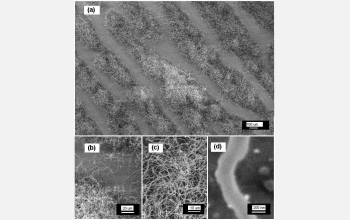
Nanofibers of poly (ethyl 2-cyanoacrylate) were grown on fingerprint ridges at 30 degrees Celsius at a relative humidity of more than 95 percent over a period of 16 hours. Scanning electron microscope image (a) shows a low magnification view; image (b) shows a close-up view of the ridge pattern; image (c) shows a close-up view of the nanofibers; and image (d) is a magnified view of a single fiber.
Credit: Reproduced by permission of The Royal Society of Chemistry; Penn State
Download the high-resolution JPG version of the image. (128 KB)
Use your mouse to right-click (Mac users may need to Ctrl-click) the link above and choose the option that will save the file or target to your computer.


